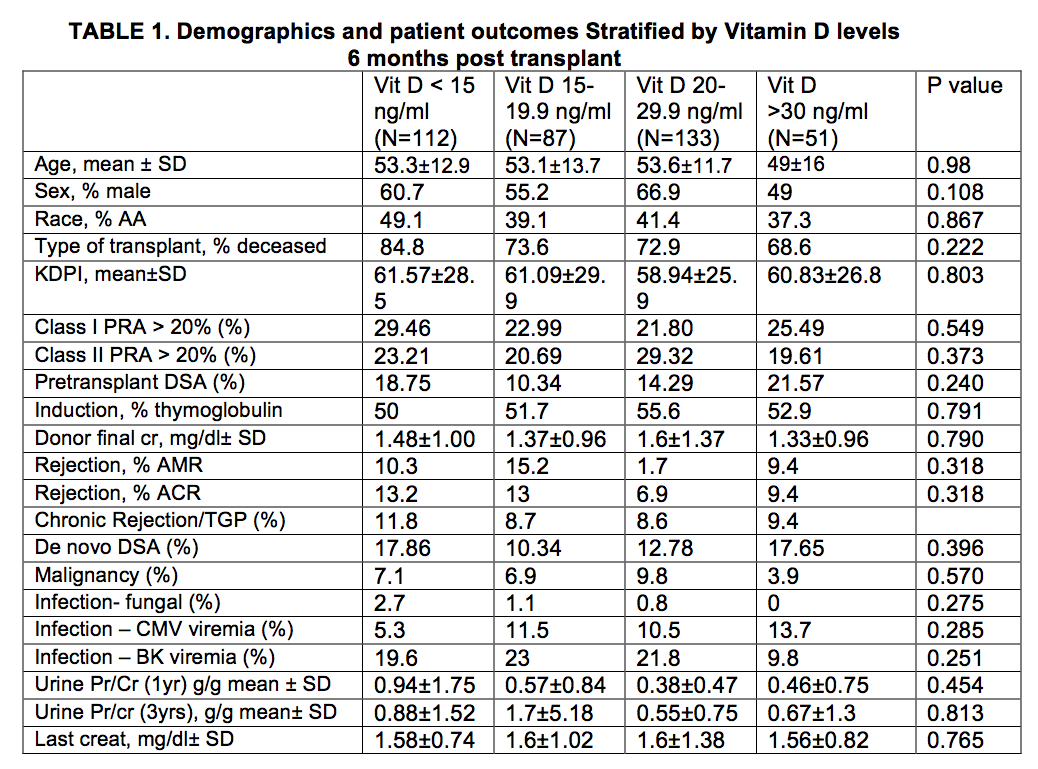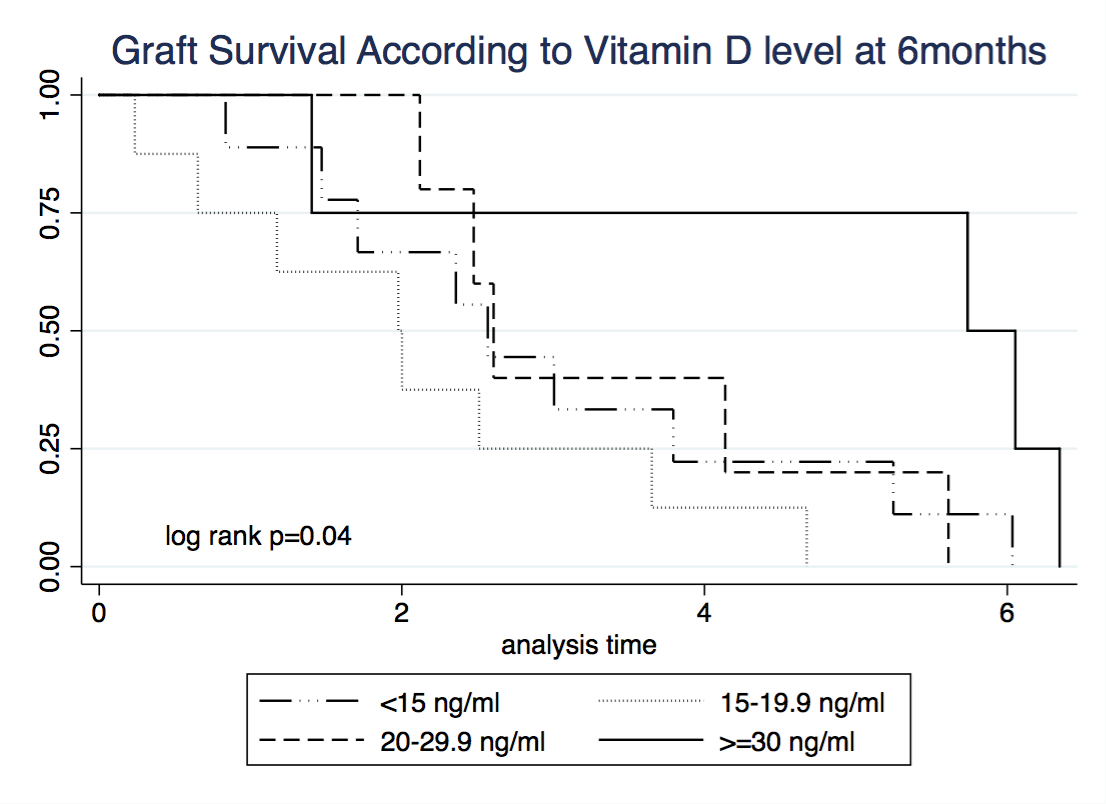Prospective Monitoring of 25-Hydroxyvitamin Vitamin D Levels After Kidney Transplantation and Its Associations with Clinical Outcomes.
P. Bedi, N. Hayde, L. Kamal, M. Ajaimy, M. Lubetzky, G. de Boccardo, E. Akalin.
Montefiore Transplant Center, Albert Einstein College of Medicine, Bronx, NY
Meeting: 2017 American Transplant Congress
Abstract number: D262
Keywords: Graft failure, Kidney transplantation, Metabolic disease, Outcome
Session Information
Session Name: Poster Session D: Long Term Kidney Outcomes
Session Type: Poster Session
Date: Tuesday, May 2, 2017
Session Time: 6:00pm-7:00pm
 Presentation Time: 6:00pm-7:00pm
Presentation Time: 6:00pm-7:00pm
Location: Hall D1
Background: Kidney transplant recipients usually have low vitamin D levels. Vitamin D deficiency is recognized as a risk factor for progression of kidney disease in general population. However, its association with graft outcomes in renal transplant patients is not well established.
Methods: We measured 25-hydroxyvitamin (OH) D levels at 6, 12, 24 and 36 months post-transplant in patients transplanted at our center between Jan 2009 and Dec 2014 and investigated the association between 25-OH-vit D levels at 6 months post-transplant and clinical outcomes.
Results: Prevalence of 25-OH-vit D levels <15, 15-19.9, 20-29.9, and > 30 ng/ml, was (29.2%, 22.2%, 34.7%, 13.3%) at 6 months, (21.4%, 23.7%, 35.0%, and 19.7%) at 1 year, (14.9%, 21.9%, 41.3%, 21.8%) at 2 years, and (16.8%, 18.5%, 38.5%, 26.2%) at 3 years, respectively. A total of 383 patients were followed up for 3.8 (2.4-5.3) years. There was no difference between the 4 groups in terms of age, sex, race, type of transplant, KDPI score, PRA levels, pretransplant DSA, and type of induction. Lower 25-OH-vit D levels increased risk of graft loss and difference was significant (p = 0.038) by Kaplan-Meier survival, even though other allograft outcomes including acute antibody or T cell mediated rejection, transplant glomerulopathy/chronic rejection, development of de novo DSA, incidence of CMV, BKV and fungal infections, malignancy, proteinuria at 1 and 3 years post-transplant, and serum creatinine levels were found to be similar.
Conclusions: 25-OH-vit D deficiency is common after kidney transplantation and low 6 months post renal transplant 25-OH-vit D levels were associated with inferior allograft survival. Randomized trials will be needed to delineate if vitamin D replacement would improve long term graft outcomes. 

CITATION INFORMATION: Bedi P, Hayde N, Kamal L, Ajaimy M, Lubetzky M, de Boccardo G, Akalin E. Prospective Monitoring of 25-Hydroxyvitamin Vitamin D Levels After Kidney Transplantation and Its Associations with Clinical Outcomes. Am J Transplant. 2017;17 (suppl 3).
To cite this abstract in AMA style:
Bedi P, Hayde N, Kamal L, Ajaimy M, Lubetzky M, Boccardo Gde, Akalin E. Prospective Monitoring of 25-Hydroxyvitamin Vitamin D Levels After Kidney Transplantation and Its Associations with Clinical Outcomes. [abstract]. Am J Transplant. 2017; 17 (suppl 3). https://atcmeetingabstracts.com/abstract/prospective-monitoring-of-25-hydroxyvitamin-vitamin-d-levels-after-kidney-transplantation-and-its-associations-with-clinical-outcomes/. Accessed December 20, 2025.« Back to 2017 American Transplant Congress
